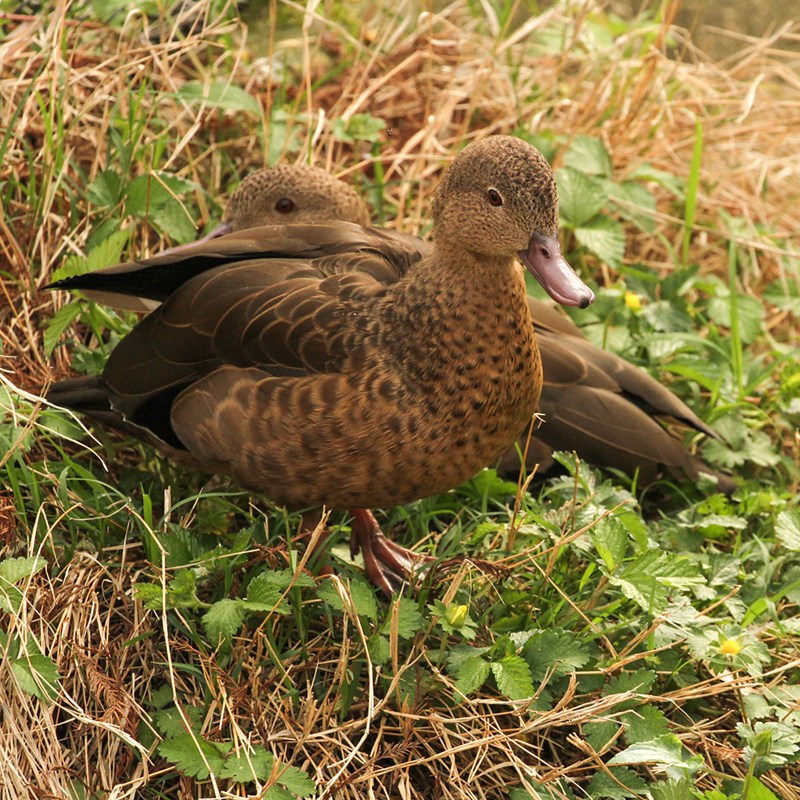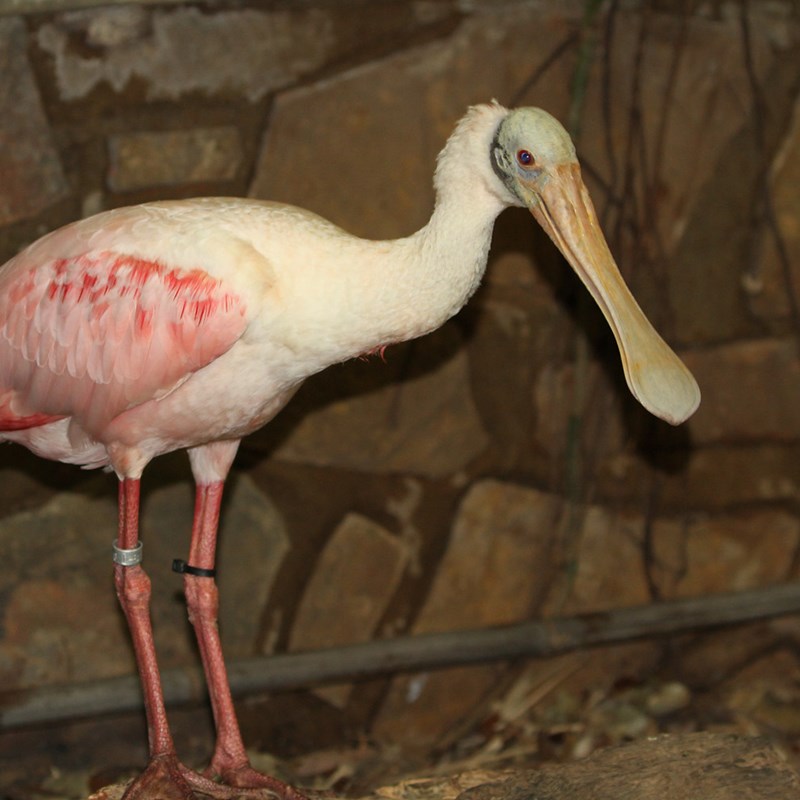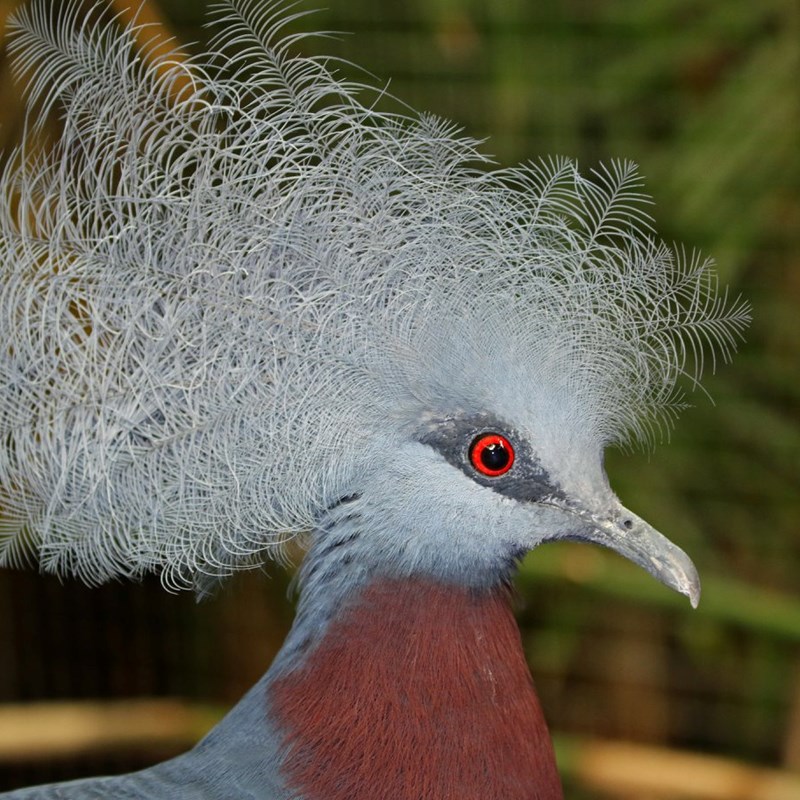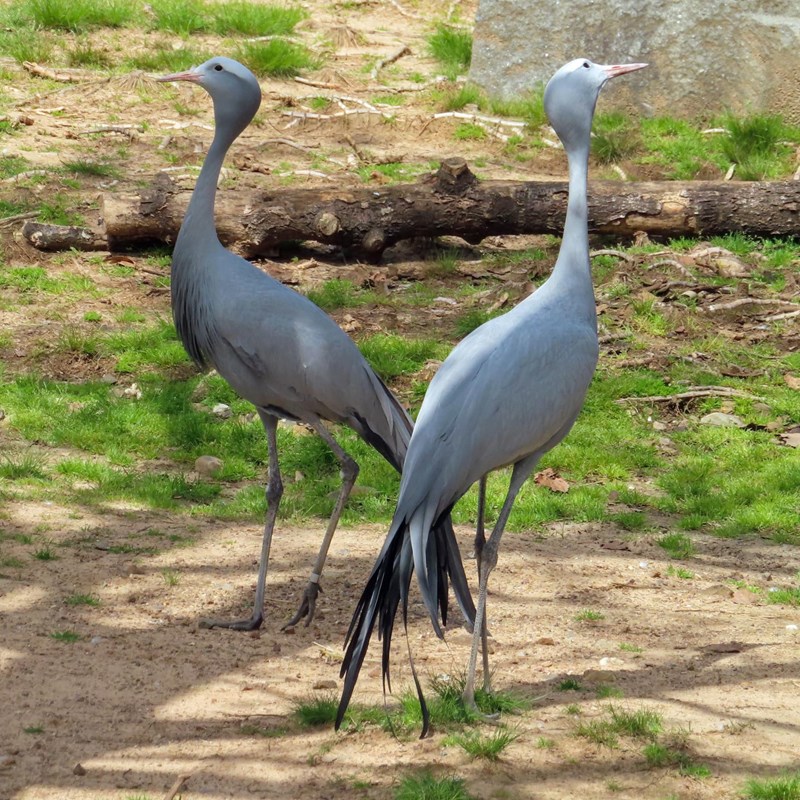Birds
Birds are a diverse group of animals belonging to the class Aves, with over 10,000 species found in virtually every habitat on Earth. From the majestic Bald Eagle soaring through the skies to the colorful Scarlet Macaw perched in tropical rainforests, birds come in a dazzling array of shapes, sizes, and colors. These remarkable animals are known for their unique adaptations, such as feathers for flight, beaks for feeding, and complex vocalizations for communication. Birds play a vital role in ecosystems as pollinators, seed dispersers, and pest controllers, making them essential for maintaining the balance of nature. The Tropical Bird House is open 10:00 – 4:00 daily Keeper Chats are daily at 10:30 AM.






Abyssinian Ground Hornbill
The Abyssinian Ground Hornbill, is a striking bird species native to the savannas and woodlands of sub-Saharan Africa. Known for its impressive size, distinctive black plumage, and striking red throat patch, this ground-dwelling hornbill is a fascinating sight to behold. Abyssinian Ground Hornbills are primarily carnivorous, feeding on a varied diet of insects, small mammals, reptiles, and even other birds. They are also known for their unique breeding behaviors, with pairs forming strong bonds and engaging in cooperative breeding efforts to raise their chicks. Unfortunately, habitat loss and hunting pose significant threats to the survival of Abyssinian Ground Hornbills in the wild.
Range/Habitat:
Abyssinian ground hornbills are large, primarily terrestrial birds that live in savannas, grasslands, and scrub across north-central Africa from Senegal and Guinea on the western coast to Ethiopia on the eastern coast.
Size:
Similar in size to a wild turkey, Abyssinian hornbills are large birds about 40 inches (102 centimeters) long and weighing up to 8 to 11 pounds (4 to 5 kilograms).
- Abyssinian ground hornbills can fly but prefer to walk. They can travel long distances on the ground. They even prefer to escape predators on foot rather than by flying.
- Abyssinian ground hornbills have long ‘eyelashes’, which are actually modified feathers. They help protect their eyes from dirt and injury.
- Abyssinian ground hornbills have a large bony part above their beak. This is called a casque and is a spongy structure made of keratin, which is the same material as hair and nails. This casque acts as an echo chamber, amplifying their calls to make them sound louder. They use these loud calls to attract a mate.
Abyssinian Ground Hornbills face significant conservation challenges due to habitat loss, degradation, and hunting throughout their range in sub-Saharan Africa. Deforestation, agricultural expansion, and urbanization have resulted in the fragmentation of their natural habitats, making it increasingly difficult for these birds to find suitable nesting sites and forage for food. Additionally, Abyssinian Ground Hornbills are often hunted for their meat, feathers, and traditional medicinal uses, further contributing to their decline in the wild. Conservation efforts aimed at protecting Abyssinian Ground Hornbills include habitat preservation, community education and engagement, and anti-poaching measures.
Ostrich
Native to Africa, ostriches are the largest birds in the world and are known for their impressive size and speed. They have long legs and powerful thighs, allowing them to run at speeds of up to 40 miles per hour, making them the fastest land birds. Ostriches are flightless birds, but their large wings are used for balance and display during courtship.
Little Rock Zoo is home to a small group of female ostriches that live with zebras in the African Savanna habitat. The females often lay eggs, but, as there are no male ostriches, the eggs are infertile.
- In the wild, these flightless birds can reach speeds of up to 43 miles per hour. They use the long dagger-like claws on their two-toed feet to defend themselves, landing kicks that can kill lions.
- The ostrich is the largest and heaviest living bird.
- Contrary to the popular myth, ostriches do not bury their heads in the sand! When an ostrich senses danger and cannot run away, it flops to the ground and remains still, with its head and neck flat on the ground in front of it.
- Ostriches have some of the largest eyes in the animal kingdom, they’re even bigger than their brains!
At one time, most of Africa was home to the ostrich. Today, although not threatened, the ostrich requires strict protection and farming to conserve the remaining wild populations. Please join our efforts to secure a future for this species by donating to our conservation fund.
VULNERABLE
Stanley Crane
(Blue Crane)
This crane is blue in color but can appear gray at a distance. They are also quite small but has a large head, thick neck, and very long wings which trail behind the bird and many confuse their wings for their tail feathers because of this. They produce loud honking calls.
Habitat/Range:
They mostly live in southern or South Africa and breed in dry grasslands at high elevations.
Size:
Length: 3 feet.
The Blue Crane is the national bird of South Africa.
Vulnerable. They are at risk due to purposeful and accidental poisoning in areas where they and other animals are seen as pests due to farming. The most significant threats are death due to power-lines, wetlands drying out, and the removal of grasslands and planting of trees for plantations.
Conservation Actions:
Some habitat protection has been established, and more ecologically sensitive chemicals are being used by agricultural workers to reduce the risk of poisoning cranes. A Crane Working Group has been organized in Namibia to facilitate education and conservation.
ENDANGERED
Grey Crowned Crane
The crane has grey plumage which contrasts against its black and white wings. They have a yellow crest of feathers on top of its head and a red patch that hangs from the neck. The yellow feathers on their head or crown offer camouflage in the tall grasses. Males are larger than females. Juveniles have gray plumage and a dark crest. They live up to 22 years in the wild and 25 years in captivity.
Habitat/Range:
They can be found in Eastern and Southern Africa and live in wetlands and open grasslands.
Size:
Height: 3 feet. Weight: 7-9lbs.
- The grey crowned crane is the national symbol of Uganda.
- They have been known to forage on grain and other crops from agricultural lands.
Endangered. They are threatened by loss or degradation of suitable wetlands due to damming, drainage, and deforestation as well as being preyed upon by domestic dogs. Live birds and eggs are also taken from the wild. They are the National bird of Uganda. International trade of this animal is very closely monitored.
Conservation Actions:
Captive breeding populations and wetland conservation projects have been established in Kenya, Uganda, and Zimbabwe.
VULNERABLE
Scheepmaker’s Crowned Pigeon
The most prominent feature of these pigeons is the blue-gray lacy feathers adorning their heads. The rest of the body is mainly blue-gray with a maroon breast and belly. It has a black “mask,” red eyes and purplish legs and feet.
Range/Habitat:
Scheepmaker’s crowned pigeons are native to southern New Guinea. They inhabit dry and flooded lowland forests.
Size:
Length: Male – 26 ¾ – 28 ¾ in. Female – 26 – 27.5 in. Weight: 5 lbs.
Also known as Southern Crowned Pigeon.
IUCN lists as a vulnerable species. This species faces many threats. The largest may be from hunting and trapping. Their meat and feathers are sold and both young and adult birds are sold for the pet trade. It also is faced with habitat loss and has gone extinct in several areas it used to inhabit.
Conservation Actions:
The Scheepmaker’s Crowned Pigeon is protected by law in Papua New Guinea.
Roseate Spoonbill
As its name implies, the roseate spoonbill has light to dark pink wings and tail. Their legs and irises are red. The upper back and neck are white but yellow to green tints may be seen. Their most distinctive feature is their large, spoon shaped bill.
Range/Habitat:
Roseate spoonbills can be found from southern Georgia south through the Caribbean and South America to Argentina. They inhabit wetland areas marshes, mangrove swamps and mud flats. These habitats may be marine, brackish or freshwater.
Size:
Weight: 2.3 lbs.
Their bill is 32” long.
IUCN lists as a species of least concern. Previously, they were hunted for their feathers and meat during the 1800s, they also suffered disturbances due to shared habitat with egrets which are greatly hunted. Now their main threat is habitat loss due to coastal dwellings. Pollution and climate change also have an effect on their numbers.
Conservation Action:
It is protected under the Migratory Bird Act.
ENDANGERED
Madagascar Teal
The two sexes are very similar in appearance and the entire plumage is a uniform light reddish-brown. The throat and chin are buff colored and the bill is pinkish-grey. The wing has a black patch known as the speculum or mirror, which is bordered with white.
Range/Habitat:
The Madagascar teal lives on the west coast and far northeast of Madagascar. They inhabit wetlands, estuaries and flooded mangrove forests.
Size:
1.3-1.5 feet
IUCN lists as an endangered species. Habitat loss is the major threat facing these birds. Wetlands are turned into rice fields and mangrove forests are cut down for timber and prawn pond construction.
Conservation Actions:
A captive breeding program, Durrell Wildlife Conservation Trust, initiated in 1993 has been successful and sheds light on the biology and behavior of these ducks.
Chilean Flamingo
The Chilean Flamingo, is a striking bird species native to South America. Known for its vibrant pink plumage and distinctive downward-curved bill, the Chilean Flamingo is a captivating sight to behold. These social birds inhabit shallow lakes, lagoons, and coastal estuaries, where they feed on algae, crustaceans, and small invertebrates. Unfortunately, habitat loss and pollution pose significant threats to the survival of Chilean Flamingos in the wild.
Chilean flamingos are tall birds with small heads, long neck, and long thin legs with webbed toes. Their bills are white with black tips and specialized for filter feeding. The bill is bent in the middle, like a banana, with a small upper portion and large, trough-like lower portion. These flamingos have the distinct pink plumage, but most feathers are white with a pink tinge. Their primary and secondary wing feathers are black with red edges. Chilean flamingos have green-gray to light blue legs with swollen pink joints. Juveniles are gray and turn pink with time. Males tend to be larger than females.
Range/Habitat:
Chilean flamingos are found from central Peru through the Andes and Uruguay to Tierra del Fuego. They live in warm, tropical areas along the coast and up into the Andes Mountains. They inhabit muddy, shallow alkaline and brackish lakes, mudflats, estuaries and lagoons.
Size:
Height: 2.5-4.75 feet, Wingspan: 4-5 feet. Weight: 5.5-7.75lbs.
- Chilean flamingos don’t gain their pink plumage until they are two to three years old.
- Crop milk is produced by a gland in the crop when special hormones become present in the adults after a chick hatches. The “milk” is mostly protein and fat with very little carbohydrates.
- Flamingos will not breed if not the right shade of pink.
- Chilean flamingos can eat up to 10% of their body weight per day.
- One source states that the oldest known fossil of a primitive flamingo dates back to about 10 million years ago.
- Chilean flamingos have been hard to classify. They are similar to storks, herons, waterfowl and waders.
- You are what you eat! Flamingos owe their pink coloration to the carotenoids in the food that they eat.
Chilean Flamingos face significant conservation challenges due to habitat loss, pollution, and human disturbance throughout their range in South America. Wetland degradation, urbanization, and agricultural expansion have resulted in the loss of important feeding and breeding habitats for these iconic birds. Additionally, pollution from industrial activities and agricultural runoff threatens the quality of their aquatic habitats, affecting their food sources and overall health. Conservation efforts aimed at protecting Chilean Flamingos include habitat restoration, wetland conservation, and public education on the importance of preserving these charismatic birds and their ecosystems.



